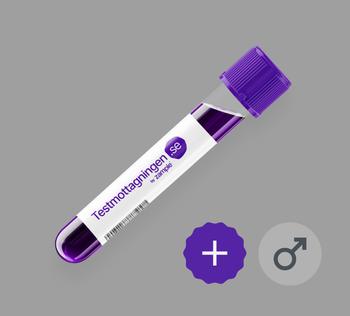PSA free/total quota
Free PSA is a specific part of the prostate-specific antigen PSA that circulates in the blood, not bound to proteins. This analysis provides important information for men being investigated for prostate cancer. PSA is produced by the prostate gland and small amounts occur naturally in the blood. An increased PSA value can indicate prostate cancer, but high values can also occur in other conditions such as prostate enlargement. By analyzing the ratio between free PSA and total PSA, you can get an even better basis for assessing the risk of prostate cancer, with special limit values for different age groups. Symptoms of prostate cancer include changes in urination patterns and blood in the urine, but these symptoms can also have other causes., but these symptoms can also have other causes.
Calculation of the PSA ratio
To calculate PSA free/total, the value of free PSA is divided by the total PSA value. The result is usually expressed as a percentage. The formula looks like this: (Free PSA / Total PSA) x 100 = PSA free/tot ratio (%). This ratio helps assess the risk of prostate cancer.
The ratio is used to distinguish prostate cancer from other conditions such as benign prostate enlargement. A lower ratio of free to total PSA may increase the suspicion of prostate cancer, while a higher ratio may indicate a lower risk. This makes the ratio a valuable marker to determine the need for diagnostic measures. By comparing the levels of free PSA with total PSA, doctors can therefore gain a better understanding of a patient's risk of prostate cancer.
Understanding the prostate cancer rate during evaluation
When it comes to prostate cancer and inflammation, there is more PSA bound to large molecules in the blood than in benign enlargement of the prostate gland. A higher percentage of free PSA compared to total PSA indicates a lower risk of cancer. However, there is no exact limit value for risk assessment. A lower percentage indicates a higher risk of serious cancer. Urologists use the ratio of free to total PSA to determine whether a biopsy is necessary, especially for men with higher PSA values and normal findings on examination.





















